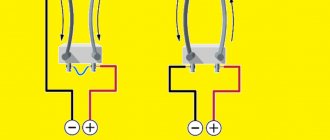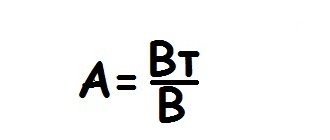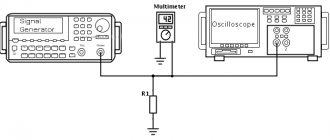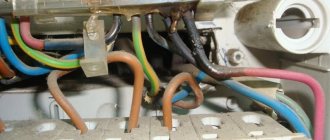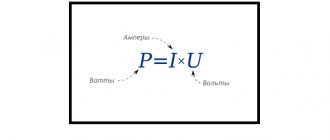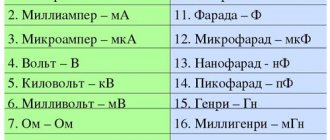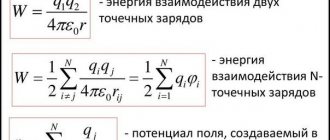Amperes and kilowatts are characteristics of the electricity consumed by devices connected to the network. The first is also called load, and the second is called power. The need for translation arises at the stage of selecting protective devices, the markings of which most often indicate only the current strength.
You will learn everything about how to convert Amperes to Kilowatts from our proposed article. We will look at the theory, understand the basic principles of translation, and then explain the meaning of these actions using practical examples. By following our advice, you can perform such calculations yourself.
Reasons for making a transfer
Power and current are key characteristics necessary for the proper selection of protective devices for equipment powered by electricity. Protection is needed to prevent melting of the wiring insulation and breakdown of units.
Electrical wiring supplying lighting, an electric stove, and a coffee machine must be protected by individually selected devices. After all, each consumer creates “its own” load - in other words, consumes a certain current.
By the way, the cables and wires that supply the listed household devices have a certain current-carrying capacity. The latter is dictated by the cross-section of the cores.
Each protective device must operate at the moment of a voltage surge that is dangerous for the type of equipment being protected or a group of technical devices. This means that RCDs and machines should be selected so that during a threat to a low-power device, the network is not completely disconnected, but only the branch for which this surge is critical.
The housings of the circuit breakers offered by the retail chain are marked with a number indicating the maximum permissible current. Naturally, it is indicated in Amperes.
But on the electrical appliances that are required to protect these machines, the power they consume is indicated. This is where the need for translation arises. Despite the fact that the units we are examining belong to different current characteristics, the connection between them is direct and quite close.
Amperes and kilowatts, which characterize the power consumption of household devices, help you choose the right protection.
Voltage is the potential difference, in other words, the work put into moving a charge from one point to another. It is expressed in Volts. Potential is the energy at each point where the charge is/was.
Current strength refers to the number of Amperes passing through a conductor in a specific unit of time. The essence of power is to reflect the speed at which the charge moved.
Power is indicated in Watts and Kilowatts. It is clear that the second option is used when an overly impressive four- or five-digit figure needs to be reduced for ease of perception. To do this, its value is simply divided by a thousand, and the remainder is rounded up as usual.
Powering high-power equipment requires a higher rate of energy flow. The maximum permissible voltage for it is higher than for low-power equipment. The machines selected for it should have a higher operating limit. Therefore, accurate selection according to the load with competent conversion of units is simply necessary.
Let's look at examples
In life, converting Kilowatts to Watts and vice versa occurs quite often. Let's look at a few examples where such calculations can be useful.
- The electric motor has a power of 1.5 kW. You need to understand what the engine power will be in W. Multiply kilowatts by a thousand. We get:
- Tables of values contain a nominal mechanical power of nine hundred watts. In Kilowatts we get the following:
Kilowatts are constantly encountered in our lives.
For example, when paying for electricity, it is often measured in kilowatts per hour of energy use. This shows how much energy an object consumes in one hour of operation. In this case, the power of devices is often calculated in Watts.
If we want to know how much 500 watts are spent per hour, we need to make the following calculation:
Transfer rules
Often, when studying the instructions included with some devices, you can see the power designation in volt-amperes. Experts know the difference between watts (W) and volt-amperes (VA), but practically these quantities mean the same thing, so there is no need to convert anything here. But kW/hour and kilowatts are different concepts and should not be confused under any circumstances.
To demonstrate how to express electrical power in terms of current, you need to use the following tools:
- tester;
- current clamps;
- electrical reference book;
- calculator.
When converting amperes to kW, use the following algorithm:
- Take a voltage tester and measure the voltage in the electrical circuit.
- Using current measuring keys, measure the current strength.
- Recalculation is carried out using the formula for direct voltage in the network or alternating.
As a result, the power is obtained in watts. To convert them into kilowatts, divide the result by 1000.
We also have material on our website about the rules for converting Amperes to Watts. To view it, please follow the following link.
Single phase electrical circuit
Most household appliances are designed for a single-phase circuit (220 V). The load here is measured in kilowatts, and the AB marking contains amperes.
In order not to do calculations, when choosing a machine, you can use the ampere-watt table. There are already ready-made parameters obtained by performing a translation while observing all the rules
The key to translation in this case is Ohm's law, which states that P , i.e. power is equal to I (current) multiplied by U (voltage). We talked in more detail about the calculation of power, current and voltage, as well as the relationship between these quantities in this article.
It follows from this:
kW = (1A x 1V) / 1 0ᶾ
But what does this look like in practice? To understand, let's look at a specific example.
Let's say the automatic fuse on an old type meter is rated at 16 A. In order to determine the power of devices that can be safely connected to the network at the same time, you need to convert amperes to kilowatts using the above formula.
We get:
220 x 16 x 1 = 3520 W = 3.5 kW
The same conversion formula is used for both direct and alternating current, but it is only valid for active consumers, such as incandescent lamp heaters. With a capacitive load, a phase shift necessarily occurs between current and voltage.
This is the power factor or cos φ. While when there is only a resistive load this parameter is taken as one, when there is a reactive load it must be taken into account.
If the load is mixed, the parameter value fluctuates in the range of 0.85. The less the reactive component of power is, the smaller the losses and the higher the power factor. For this reason, they strive to increase the last parameter. Manufacturers usually indicate the power factor value on the label.
Three-phase electrical circuit
In the case of alternating current in a three-phase network, take the value of the electric current of one phase, then multiply it by the voltage of the same phase. What we get is multiplied by cosine phi.
Connecting consumers can be done in one of two options - star and triangle. In the first case, these are 4 wires, of which 3 are phase and one is neutral. The second uses three wires
After calculating the voltage in all phases, the data obtained is added up. The amount obtained as a result of these actions is the power of the electrical installation connected to the three-phase network.
The basic formulas are as follows:
Watt = √3 Ampere x Volt or P = √3 x U x I
Ampere = √3 x Volt or I= P/√3 x U
You should have an understanding of the difference between phase and linear voltages, as well as between linear and phase currents. In any case, the conversion of amperes to kilowatts is carried out using the same formula. An exception is the delta connection when calculating loads connected individually.
On the cases or packaging of the latest models of electrical appliances, both current and power are indicated. With this data, we can consider the question of how to quickly convert amperes to kilowatts resolved.
Experts use a confidential rule for circuits with alternating current: divide the current strength by two if you need to roughly calculate the power in the process of selecting ballasts. The same is done when calculating the diameter of conductors for such circuits.
How to convert amps to kilowatts and back
To convert amperes to kilowatts and find out the power, you need to multiply the network voltage, current strength and cosФ, which is equal to 1. For example, in a single-phase network the voltage is 220 Volts, and a 16 Ampere circuit breaker is installed on the meter.
To find out how much the circuit breaker can withstand, that is, what load in terms of the power of all electrical appliances can be connected to it, 220x16x1 = 3520 Watts is enough. Thus, it becomes clear that the circuit breaker is designed for a load of no more than 3.5 kW.
In the same way, kW is converted to amperes, only using division. Knowing the total power of electrical appliances and the network voltage, you can calculate the number of amperes. This will allow you to more accurately calculate which circuit breaker to install to protect the electrical wiring that connects electrical appliances in the house.
Let's say there is a kettle with a power of 2000 watts. For its operation you need a mains voltage of 220 volts. Divide the power by the voltage to get the current, that is, amperes. In this case, about 9 amperes of current come out.
It is always worth remembering that the wires themselves must withstand the load from the operation of electrical appliances. It is very important that the rating of the circuit breaker is not greater than the value for which the cable cross-section is not designed.
Share article on social networks
Conclusions and useful video on the topic
About the connection between watts, amperes and volts:
The relationship between amperes and kilovolts is described by Ohm's law. Here there is an inverse proportionality of the strength of the electric current in relation to the resistance. As for voltage, there is a direct dependence of the current on this parameter .
Do you still have questions about the principle of converting Amperes to Kilowatts or want to clarify the nuances of practical calculations? Ask your questions to our experts in the comments block located below the article.
If you have useful information that complements the material presented above, or clarifications, corrections, write your comments and additions below.
Why indicate the Tesla battery capacity in “kWh”?
Tesla managers previously stated that this was a good marketing ploy .
“It’s just more convenient for everyone because kWh is the best way available to compare different batteries,” the managers say.
First of all, the company wants to reduce the consumer entry barrier. As you know, Tesla batteries are used in electric vehicles and in home and industrial systems.
Even people who are far from technology have some idea about energy consumption. These “standards” and “units” of energy consumption are indicated in “kWh” . Everyone is accustomed to using “kilowatt-hours” in everyday life, since the monthly electricity bill is also billed in kilowatt-hours.
Watt, kilowatt and kilowatt-hour
The unit of measurement watt got its name in honor of the scientist James Watt, who studied electricity in the nineteenth century. It is he who is credited with the invention of the universal steam engine.
Today, any power is measured in watts, not just electrical power. For example, to measure the power of a car engine, watts are also used along with horsepower. However, most often it is not the “watt” itself that is used, but its derivative, the kilowatt (kW). By analogy with the meter and kilometer, as well as with the gram and kilogram, one kilowatt is equal to a thousand watts.
Energy is often also calculated in other units, multiples of the watt. For example, to measure high power it is convenient to use the megawatt, a unit that corresponds to a million watts. You can also use other prefixes of the international system of units, including those that correspond to tenths, hundredths, thousandths.
For example:
- deciwatt is a tenth of a watt;
- centiwatt - its hundredth part;
- A milliwatt is a thousandth of a watt.
The electric power that is consumed by ordinary household appliances such as lamps, refrigerators, and TVs is best measured in kW. If the watt and its derivative units are included in the SI system, then the kilowatt-hour is not there. KWh is a unit of measurement that is non-systemic. It was created only to keep track of the electrical energy produced or, conversely, used.
The use of kWh on the territory of the Russian Federation is regulated by GOST, which clearly indicates the name, designation and area in which it is used. A kilowatt-hour can be designated either by four Russian letters or three English ones. The Russian designation is “kWh”, and the English designation is “kW h”.
You might be interested in Ampere: characteristics of the unit of current measurement
Summarizing
So, where in real life you might need conversions from W to kilowatts and vice versa:
- The ability to apply such simple calculations in life will help you plan your electricity expenses;
- Knowing the units of measurement will help determine the wire cross-section for electrical wiring and select suitable protective devices;
- Different devices have different values, so you can adjust them to a single value and sum them up.
- Such knowledge is simple and necessary for every person, since such measurements relate to calculations in physics in high school classes.
Now you know how to correctly convert Watts to Kilowatts, how to do the opposite action and why this is needed. Don’t let physical quantities scare you, because making calculations is easy and interesting!
